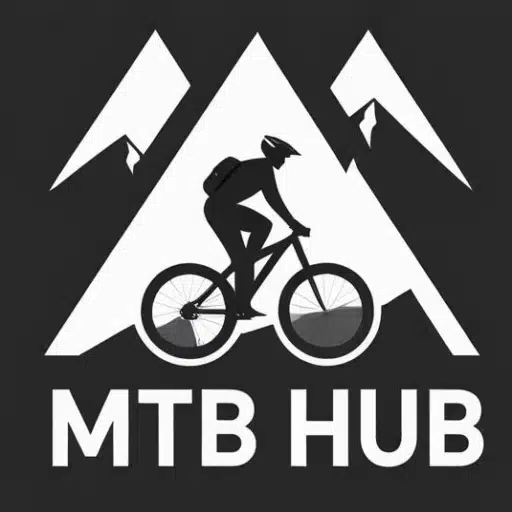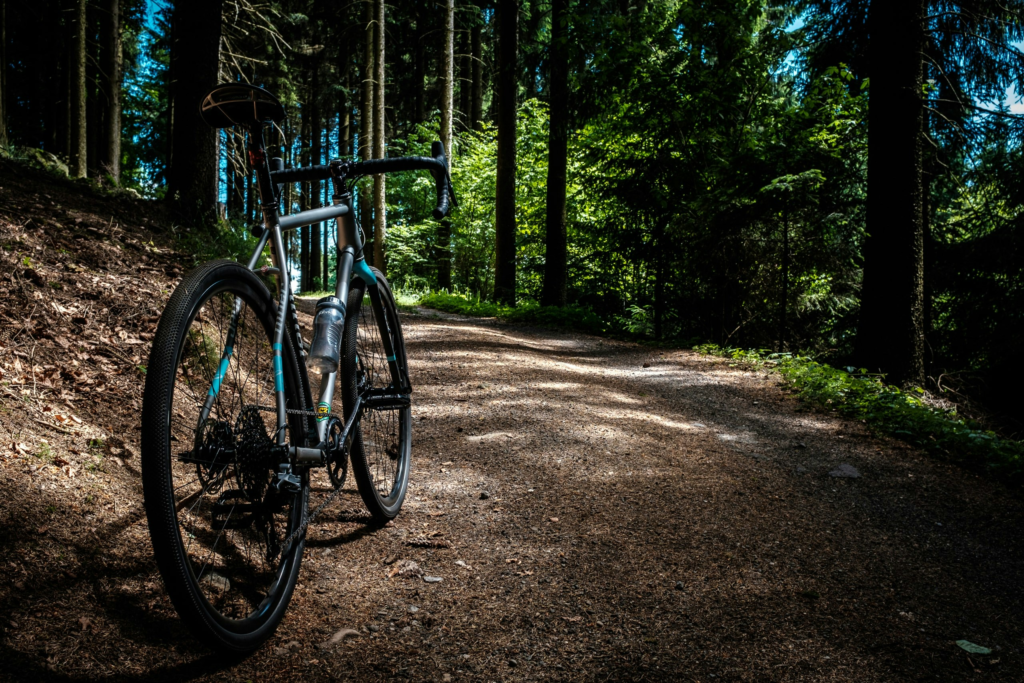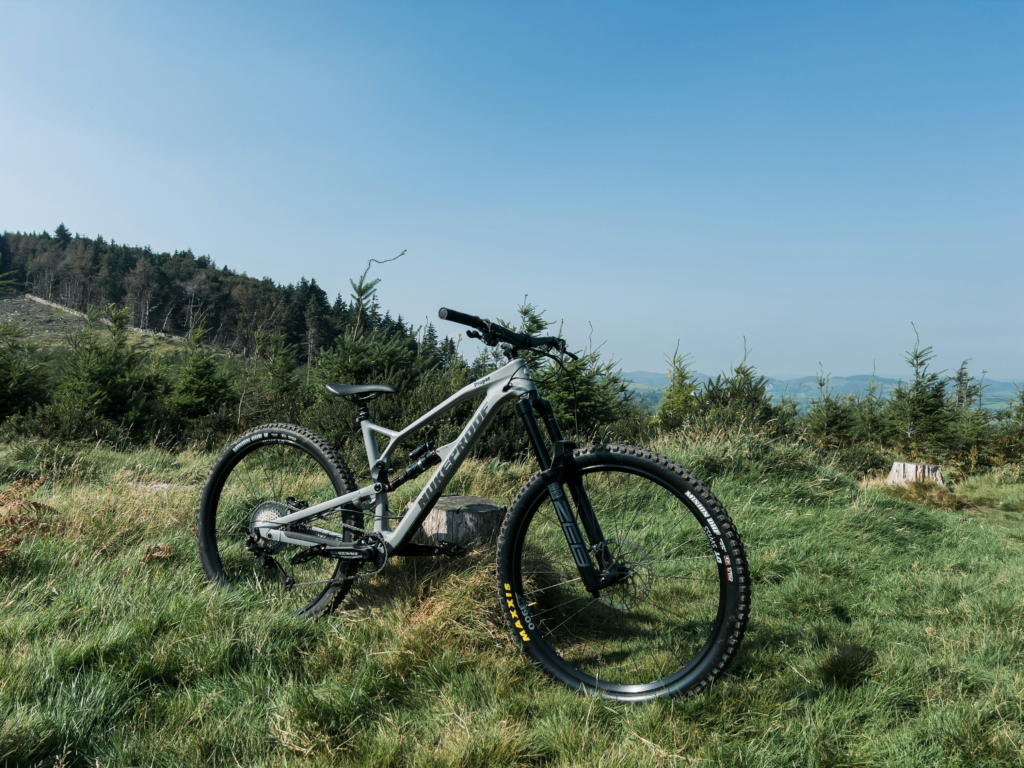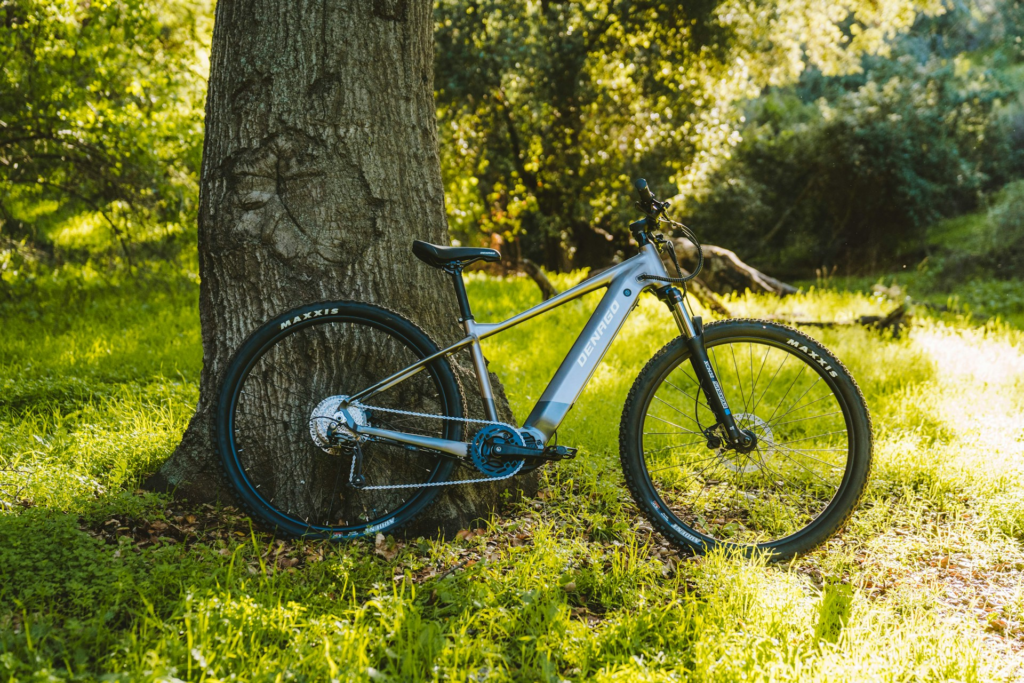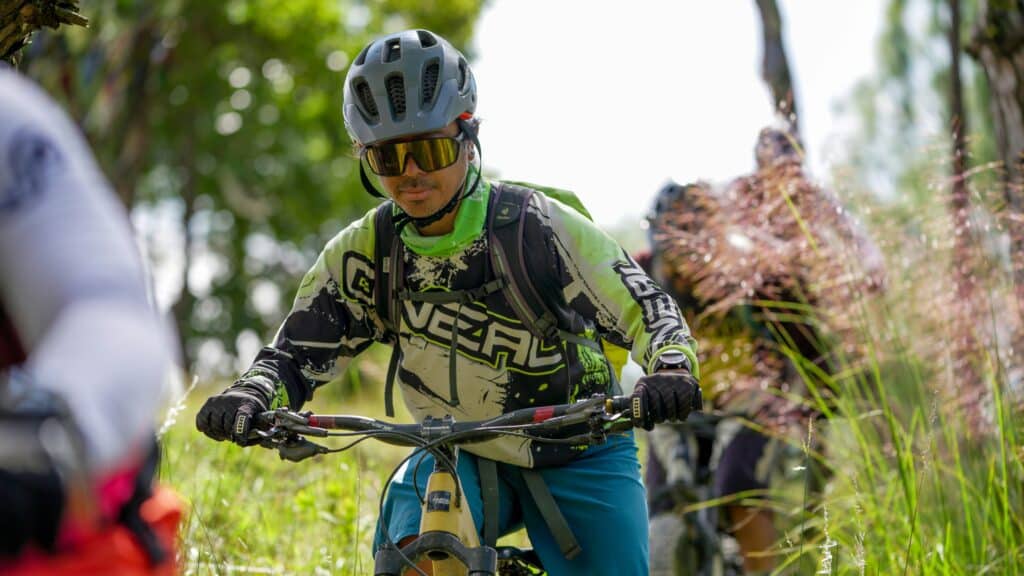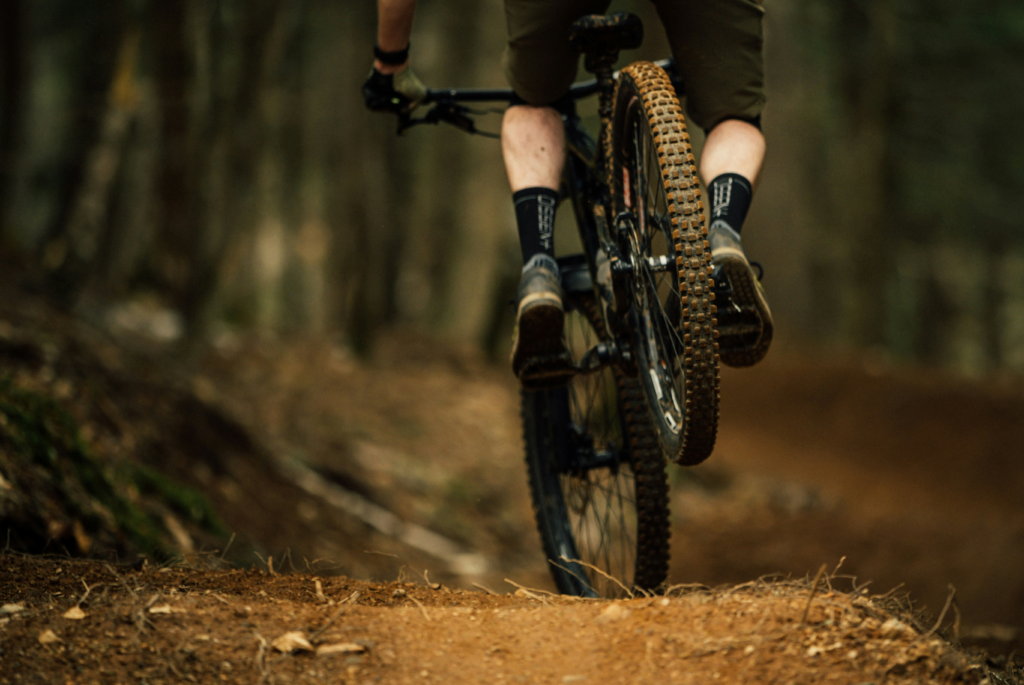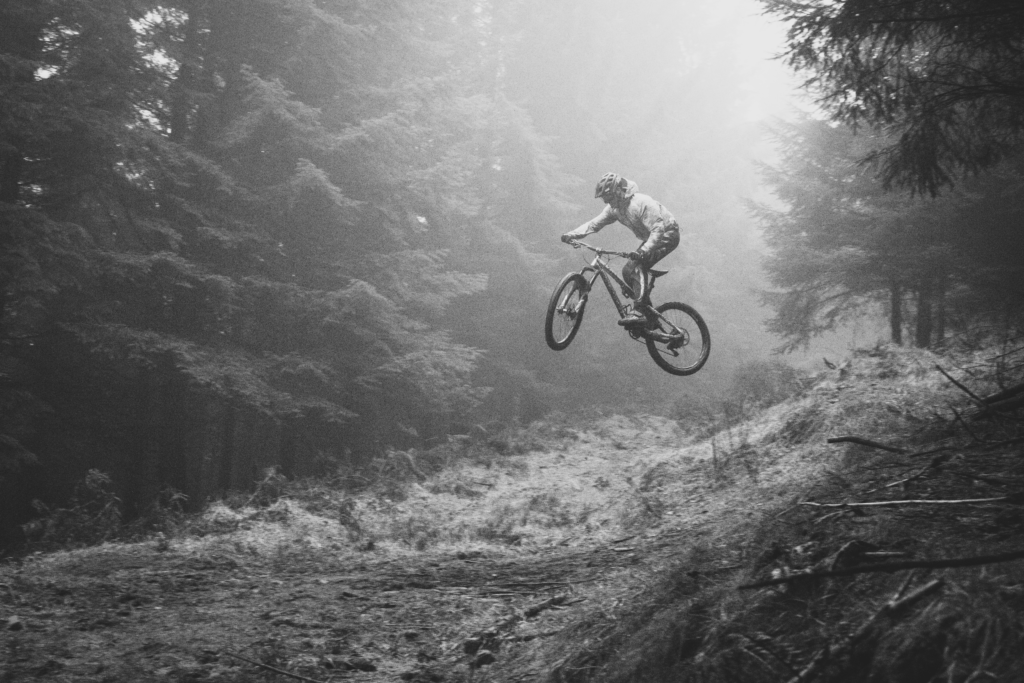Trek Supercaliber focus

Why Trek Supercaliber? The Smart Choice for XC Performance
Before we dive into the deals, let’s talk about why we’re spotlighting the Supercaliber range of full suspension cross country bike options. This isn’t favouritism—it’s recognition of a platform that’s proven itself at the highest levels of the sport whilst remaining accessible and practical for everyday riders.
The Supercaliber Advantage
Trek’s IsoStrut suspension system is genuinely different. Where traditional full suspension designs use a rear shock, the IsoStrut integrates suspension into the seat tube itself, creating a system that delivers 60mm of rear travel that rides more like 100mm. The result? A bike that pedals with hardtail efficiency but absorbs trail chatter and maintains traction like a proper full suspension machine.
The benefits are tangible: you’ll climb faster because there’s virtually zero suspension bob, yet when you hit rocks, roots, or rough sections, the bike smooths everything out whilst keeping your rear tyre glued to the ground. Weight? These bikes are properly light—often 1-2kg less than comparable XC platforms.
Race pedigree matters: Supercalibers have won World Cup races, Olympic medals, and countless national championships. When the world’s fastest XC racers choose this platform, that tells you everything about its capability.
Trek’s support network: You’re buying into a brand with dealers everywhere, comprehensive warranties, and parts availability that ensures your bike stays on the trail rather than waiting for obscure components.
Who It’s Perfect For
The Supercaliber isn’t for everyone—but if you fall into these categories, it might be perfect for you:
- Serious racers wanting equipment that won’t limit performance
- Efficiency obsessives who value every watt of pedalling power
- Trail riders on smoother to moderately technical terrain who want to cover ground quickly
- Weekend warriors stepping up to carbon and ready for genuine race capability
- Multi-discipline riders who want one bike for racing, training, and spirited trail rides
If you regularly ride bike parks or full-on enduro terrain, look elsewhere. But for XC racing, marathon events, and fast trail riding? The Supercaliber is a weapon.
Trek Supercaliber Model Range Explained
Trek offers Supercalibers across a wide price spectrum, and understanding the hierarchy helps you land on the right model for your needs and budget.
Understanding the Naming System
- SL Models (9.9 SL): Super light variants with the absolute lightest frames and components
- 9.9-9.7 Models: Full carbon frames with varying component specifications
- 9.6-9.4 Models: Mix of carbon and aluminium options at more accessible price points
The number after “9.” generally indicates the spec level—higher numbers mean lighter weight and more premium components. But here’s the secret: the frame and suspension performance remain excellent across the range.
At-A-Glance Comparison
| Model Tier | Price Range | Best For |
| 9.9 Series | £8,000+ | Serious racers, weight obsessives |
| 9.6-9.8 | £4,000-7,500 | Competitive club riders |
| 9.2-9.4 | £2,900-4,000 | Weekend warriors, newcomers |
Now let’s look at what’s actually available and on sale right now.
TREK Supercaliber SL 9.6 Gen 2 full suspension cross country bike

Trek Supercaliber SL 9.6 Gen 2 – £3,400
Available in: Matte Carbon and Gloss Black Splatter | Fury Red and Carbon Red Smoke
Value Proposition
At £3,400, the Supercaliber SL 9.6 delivers genuine race performance with SL OCLV Mountain Carbon construction that strikes the perfect balance of stiffness and compliance. The pivotless IsoStrut suspension provides 80mm of damped, tunable rear travel with zero pedalling bob, paired with a 110mm RockShox Reba RL fork for confident handling on modern XC courses. You’re getting Trek’s premium carbon technology, wide-range SRAM Eagle 12-speed shifting, powerful 4-piston hydraulic brakes, and a dropper post included as standard—components typically found on bikes costing significantly more.
The Bottom Line
The Supercaliber SL 9.6 is a purpose-built carbon XC race bike that punches well above its price point. With lightweight SL carbon, efficient IsoStrut rear suspension that soaks up trail chatter without sacrificing power transfer, and race-worthy components throughout, this bike is ready to chase podiums straight from the box. Whether you’re competing at club level, tackling marathon events, or flying over singletrack, you’re getting championship-winning technology at an accessible price. Available in two striking colourways—choose your style and go full gas.
Check Availability & Buy Now →
TREK Supercaliber SL 9.7 GX AXS Gen 2 full suspension cross country bike

Trek Supercaliber SL 9.7 GX AXS Gen 2 – £4,500
Available in: Lava | Carbon Blue Smoke
Value Proposition
At £4,500, the Supercaliber SL 9.7 GX AXS delivers ultralight race performance with a high-modulus SL OCLV Mountain Carbon frame that offers exceptional stiffness and minimal weight. The 110mm RockShox SID fork with DebonAir spring pairs with 80mm IsoStrut rear suspension featuring a SIDLuxe shock and remote lockout for precise, controlled damping on any terrain. You’re getting fully wireless SRAM GX AXS 12-speed electronic shifting for smooth, reliable gear changes, plus premium touches including Bontrager Line Pro carbon handlebars, carbon dropper post, Bontrager Kovee Comp 25 wheels optimised for XC racing, and powerful SRAM Motive Bronze 4-piston hydraulic brakes—a complete race-ready package.
The Bottom Line
The Supercaliber SL 9.7 GX AXS is engineered specifically for race day performance, combining Trek’s lightest, stiffest frame with wireless electronic shifting and premium suspension components. The high-modulus carbon construction and pivotless seat stays reduce weight whilst absorbing trail vibrations, whilst the remote lockout IsoStrut system lets you control damping on the fly. Perfect for racers who want to sprint up climbs, handle technical trails with ease, and benefit from wireless shifting convenience without the flagship price tag. Available in two striking colourways—this is your weapon for the podium.
Check Availability & Buy Now →
TREK Supercaliber SLR 9.8 XO AXS full suspension cross country bike

Trek Supercaliber SLR 9.8 X0 AXS – £5,825
Available in: Carbon Smoke and Galactic Grey Marble
Value Proposition
At £5,825, the Supercaliber SLR 9.8 X0 AXS delivers ultra-light race performance with Trek’s premium SLR Mountain Carbon frame featuring a high-modulus layup for maximum stiffness with minimal weight. The 110mm RockShox SID Select+ fork with DebonAir spring and Charger Race Day damper pairs with 80mm IsoStrut rear suspension from a SIDLuxe shock with remote lockout for trail-smoothing efficiency. You’re getting fully wireless SRAM X0 AXS 12-speed electronic shifting with direct-mount shifters for precise, reliable gear changes, plus top-tier components including Bontrager Kovee Elite 30 carbon wheels, carbon RSL Integrated handlebar and stem combo, Bontrager Line dropper post, and SRAM Level Silver 4-piston hydraulic brakes—a complete race-ready package built with championship-winning technology.
The Bottom Line
The Supercaliber SLR 9.8 X0 AXS is designed for racers who demand a lightweight, aggressive XC bike that performs at the highest level. The ultra-light, high-modulus SLR carbon frame with pivotless seat stays saves weight whilst reducing trail chatter, whilst the wireless X0 AXS drivetrain and carbon wheels deliver responsive handling exactly when you need it. With modern XC geometry, remote lockout suspension control, and an integrated carbon cockpit, this bike is engineered to sprint up climbs, handle technical trails with ease, and compete at the sharp end of any race. Available in a stunning Carbon Smoke and Galactic Grey Marble finish—this is your weapon for serious competition.
Check Availability & Buy Now →
TREK Supercaliber SLR 9.8 XT Di2 Gen 2 full suspension cross country bike

Trek Supercaliber SLR 9.8 XT Di2 Gen 2 – £7,150
Available in: Carbon Smoke and Galactic Grey Marble
Value Proposition
At £7,150, the Supercaliber SLR 9.8 XT Di2 delivers ultralight, race-ready performance with a high-modulus SLR OCLV Mountain Carbon frame that combines featherweight stiffness with refined compliance. The 110mm Fox Factory 34 SL Step-Cast fork with Float EVOL air spring and GRIP SL 2-position damper pairs with 80mm IsoStrut rear suspension from a RockShox SIDLuxe shock, both featuring dual remote lockout for precise control and efficiency on rough terrain. You’re getting Shimano’s legendary XT Di2 12-speed wireless electronic drivetrain for fast, reliable shifting under load, plus premium components including Bontrager Kovee Elite 30 carbon wheels, carbon RSL integrated handlebar and stem combo, Bontrager Line dropper post, and Shimano XT M8200 hydraulic disc brakes—top-end carbon performance throughout.
The Bottom Line
The Supercaliber SLR 9.8 XT Di2 is engineered for racers who demand the highest level of performance with ultra-reliable electronic shifting. The SLR carbon frame with pivotless seat stays reduces weight whilst flexing to absorb trail chatter, maintaining comfort without sacrificing speed. Perfect for XC riders who want to sprint climbs, blast descents, and stay sharp on technical courses—the Fox Factory suspension with dual remote lockout gives you precise control exactly when you need it. With modern XC race geometry, carbon wheels for fast acceleration, and Shimano’s bulletproof Di2 technology, this bike performs at the highest level. Available in Carbon Smoke and Galactic Grey Marble—your weapon for serious competition.
Check Availability & Buy Now →
TREK Supercaliber SLR 9.9 XTR Di2 Gen 2 full suspension cross country mountain bike

Trek Supercaliber SLR 9.9 XTR Di2 Gen 2 – £8,950
Available in: Navy Smoke
Value Proposition
At £8,950, the Supercaliber SLR 9.9 XTR Di2 delivers ultra-light, elite XC race performance with an SLR Mountain Carbon frame featuring a high-modulus layup that maximises stiffness whilst keeping weight to a minimum. The 110mm front fork pairs with 80mm IsoStrut rear suspension to smooth rough terrain without reducing pedalling efficiency, maintaining momentum and traction on increasingly technical XC courses. You’re getting Shimano’s latest XTR Di2 wireless electronic drivetrain for uncompromising speed and control, plus premium components including lightweight carbon wheels for fast acceleration, full carbon cockpit for precise handling, and race-focused geometry for efficient climbing and stable descending—an ultra-light race machine built for elite performance.
The Bottom Line
The Supercaliber SLR 9.9 XTR Di2 is engineered for elite performance on the most demanding modern XC courses. The high-modulus SLR carbon frame delivers maximum stiffness with minimal weight, whilst the smooth, controlled suspension feel maintains your momentum through technical sections. Perfect for racers who demand uncompromising speed, precision, and reliability at the highest level—Shimano’s XTR Di2 wireless shifting and carbon wheels ensure you’re ready for podium-level competition. With race-focused geometry and a full carbon cockpit, this ultra-light machine is built to handle technical terrain with confidence. Available in Navy Smoke—this is your weapon for elite XC racing.
Check Availability & Buy Now →
TREK Supercaliber SLR 9.9 XX Flight Attendant Gen 2 full suspension cross country mountain bike

Trek Supercaliber SLR 9.9 XX Flight Attendant Gen 2 – £12,550
Available in: Navy Smoke
Value Proposition
At £12,550, the Supercaliber SLR 9.9 XX Flight Attendant delivers ultra-light, race-day performance with an SLR Mountain Carbon frame featuring a high-modulus layup for maximum stiffness with minimal weight. The 110mm front fork pairs with 80mm IsoStrut rear suspension for smooth pedalling efficiency and precise XC handling on the toughest courses. You’re getting SRAM’s lightest XX Flight Attendant wireless direct-mount drivetrain for ultra-light, responsive shifting, plus premium components including carbon wheels and full carbon cockpit for lightweight performance—an ultimate race machine designed for championship-level competition.
The Bottom Line
The Supercaliber SLR 9.9 XX Flight Attendant is Trek’s flagship ultra-light carbon XC mountain bike, engineered for race-day performance at the highest level. The high-modulus SLR carbon frame delivers maximum stiffness whilst keeping weight to an absolute minimum, whilst the carbon wheels and cockpit ensure every component contributes to responsive, efficient handling. Perfect for elite racers who demand the lightest, most advanced technology available—SRAM’s XX Flight Attendant wireless direct-mount drivetrain and carbon construction throughout make this the ultimate weapon for serious XC competition. Available in Navy Smoke—this is the pinnacle of XC race bike performance.
Check Availability & Buy Now →
Frequently Asked Questions
What happens when I click these links?
We earn a small commission when you buy through our links, which supports this site and allows us to continue finding and sharing great deals. You pay exactly the same price—there’s no markup for using our links.
How long will these deals last?
Most deals run until stock depletes or the end of the current season (typically through November). Popular sizes—especially Medium, Medium/Large, and Large—sell out first, sometimes within weeks. The 9.6 and 9.8 models historically sell fastest due to their exceptional value.
Are Supercalibers suitable for beginners?
The 9.4 and 9.6 models work well for motivated beginners who understand they’re buying into XC-specific bikes. These are full suspension cross country bikes and they excel at what they’re designed for—fast, efficient riding on XC terrain.
However, if you’re completely new to mountain biking and haven’t yet defined your riding style, consider starting with a trail bike first. XC bikes are more specialised tools that reward fitness and technique.
Can I use a Supercaliber for trail riding?
Absolutely. Many riders use Supercalibers as their primary trail bikes, especially in areas with smoother, faster trails. The bikes handle trail centres, natural terrain, and mixed riding confidently.
What they won’t replace: enduro bikes, downhill bikes, or full-on gravity equipment. The 60mm rear travel is brilliantly effective but has limits. For bike parks with big jumps and drops, or extremely rough enduro-style terrain, you’d want something with more travel.
For 80% of trail riding—especially if you value efficiency on climbs—a Supercaliber is remarkably versatile.
Is the 60mm rear travel really enough?
Trek’s IsoStrut system punches well above its travel numbers. The 60mm feels more like 100mm from a traditional design because of how efficiently it uses the available travel and maintains traction.
Will it replace a 130mm trail bike? No. But for XC racing, marathon events, and faster trail riding, it’s genuinely excellent. World Cup racers choose this platform—if it’s good enough for them on technical World Cup tracks, it’s probably adequate for your local trails.
Should I wait for newer models or 2026 bikes?
The Gen 2 Supercaliber is current, competitive, and proven. Gen 3 might arrive late 2025 or early 2026, but it’ll be at full retail pricing—possibly £1,000-1,500 more than these current deals.
Bike development is incremental. The performance difference between model years is typically small. These deals offer better value than waiting months for new models at full price. You could be riding and improving now rather than waiting.
What maintenance should I expect?
XC race bikes require regular maintenance to perform optimally:
- Every ride: Check tyre pressure, quick visual inspection
- Every 10-15 hours: Clean and lube chain, check brake pads
- Every 50-75 hours: Full service—drivetrain clean, brake bleed if needed
- Annually: Suspension service (fork and IsoStrut), full bike inspection
Budget approximately £200-300 annually for servicing if doing it professionally, less if you learn to do basic maintenance yourself.
Can I upgrade components over time?
Absolutely. The frame and suspension are the foundation—components can evolve as budget allows:
High-impact upgrades: Wheels (biggest performance gain), tyres (immediate feel), contact points (saddle, grips, pedals)
Medium-impact: Drivetrain (if you started with Deore and want GX/XT later), fork upgrade
Lower-impact: Finishing kit, brake upgrades (unless yours are inadequate)
The beauty of buying the right frame is that you can evolve the bike over time without replacing the expensive foundation.
